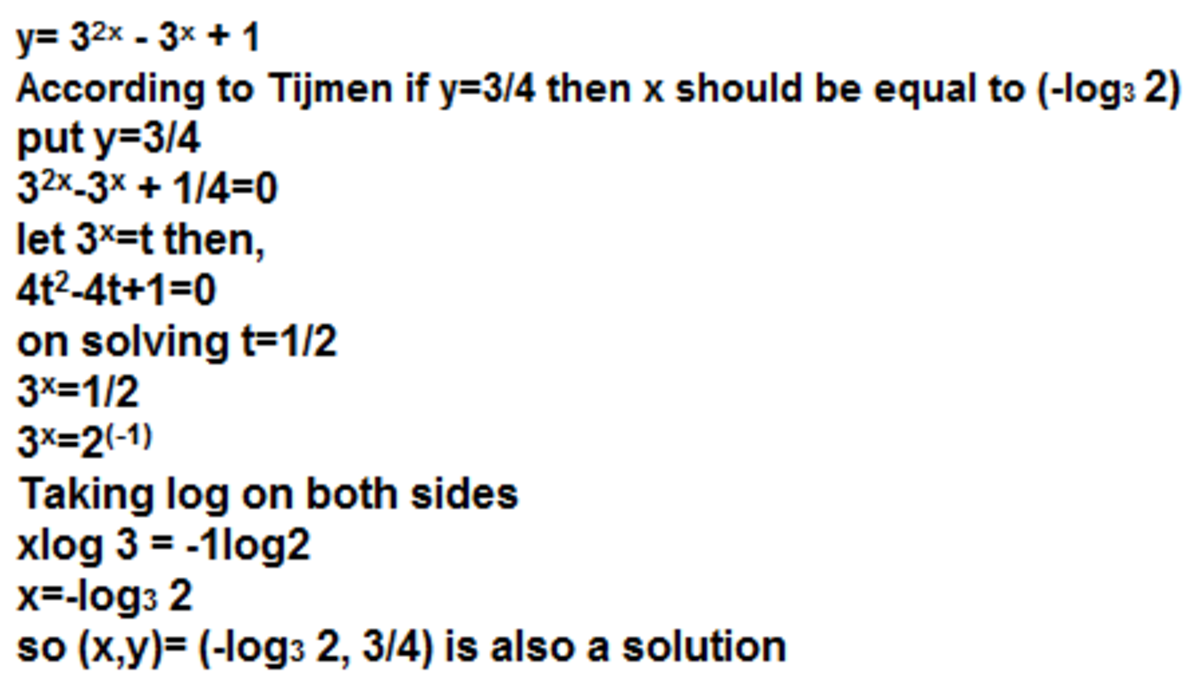If x is real then y is?
If , where can take any real value then takes:
This section requires Javascript.
You are seeing this because something didn't load right. We suggest you, (a) try
refreshing the page, (b) enabling javascript if it is disabled on your browser and,
finally, (c)
loading the
non-javascript version of this page
. We're sorry about the hassle.
y = 3 2 x − 3 x + 1
let 3 x = t
y = t 2 − t + 1
Discriminant (D) = -3 < 0
coefficient of highest term is positive.
Hence y is always greater than 0 and has a minimum value equal to -D/4
-D/4 = 3/4
So y takes all real values greater than 3/4
After Tijmen Veltman's (Netherlands) report.
Hence the right answer should be "all real values greater than or equal to 3/4"